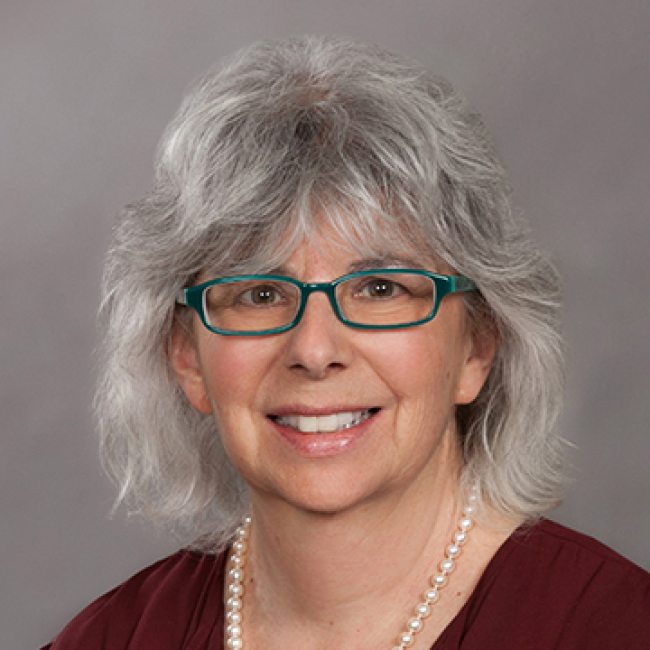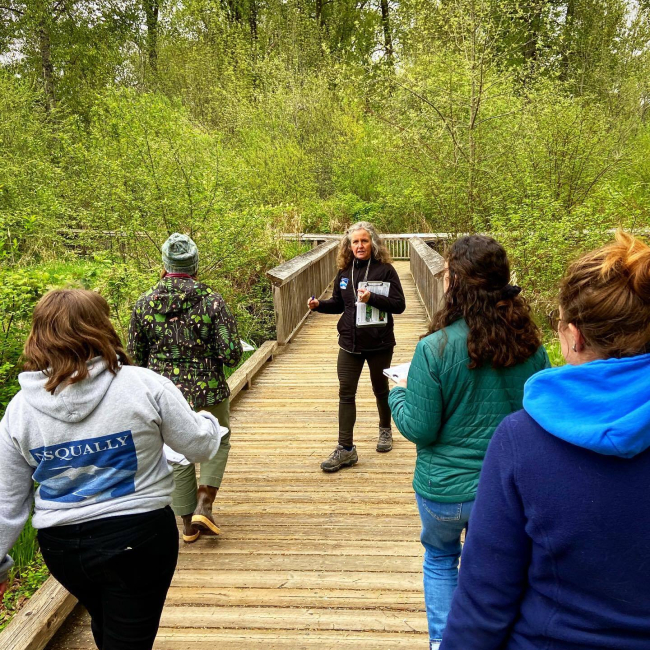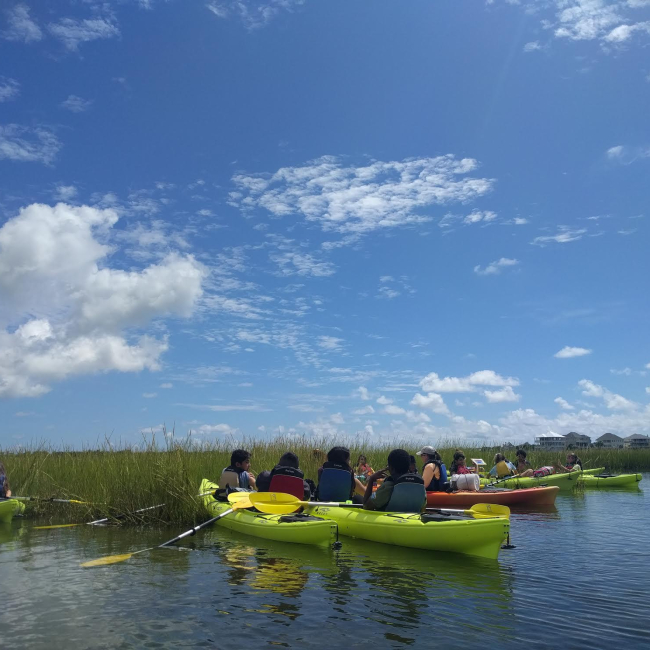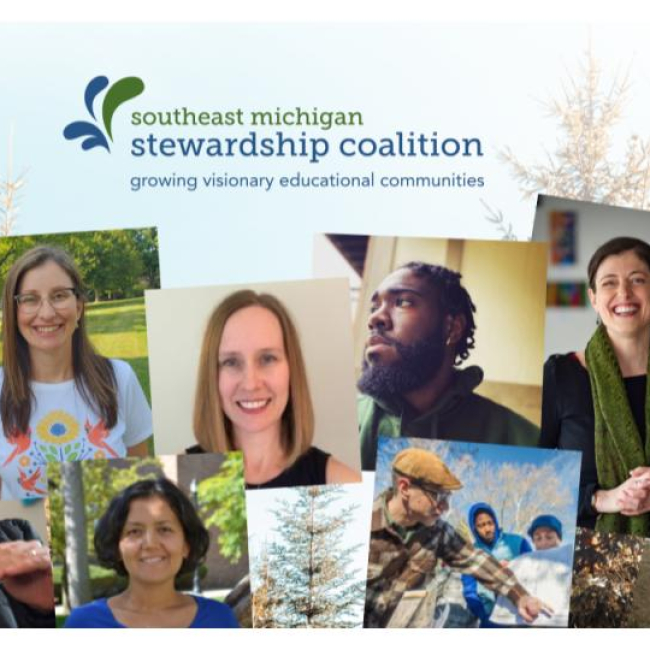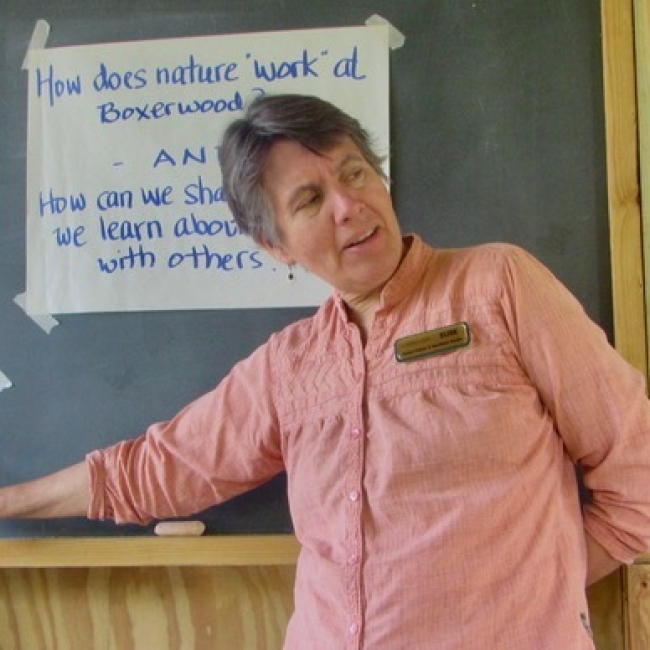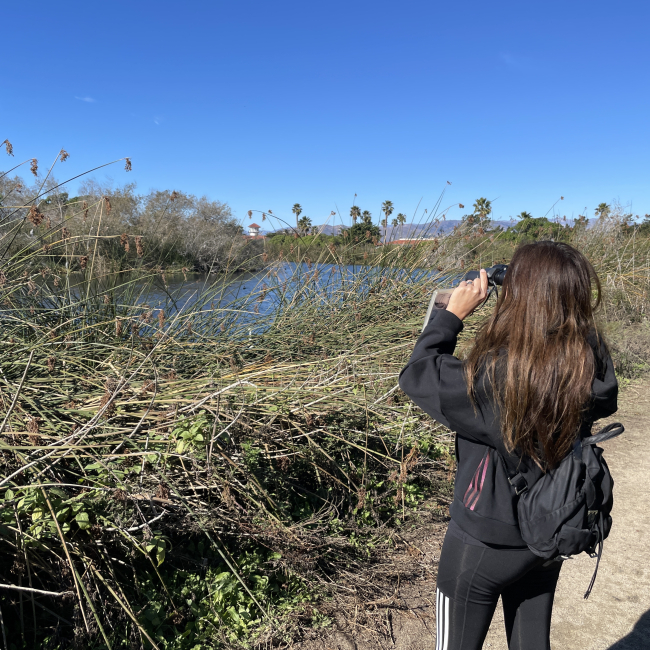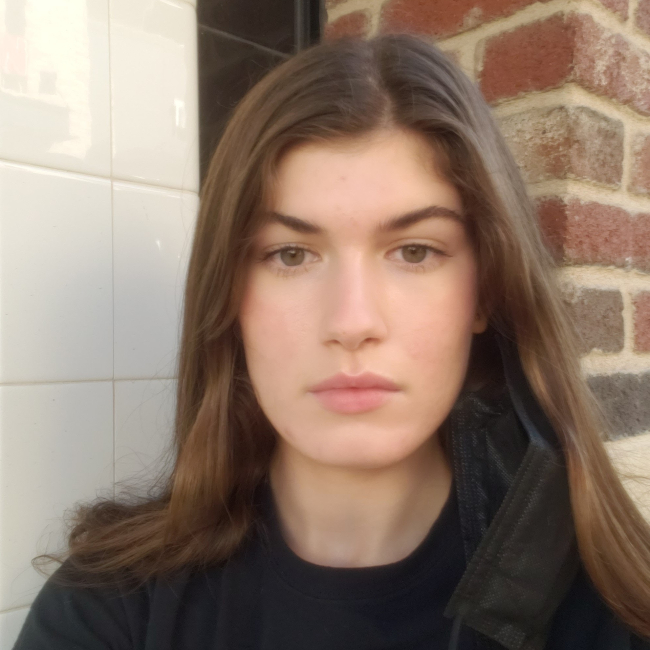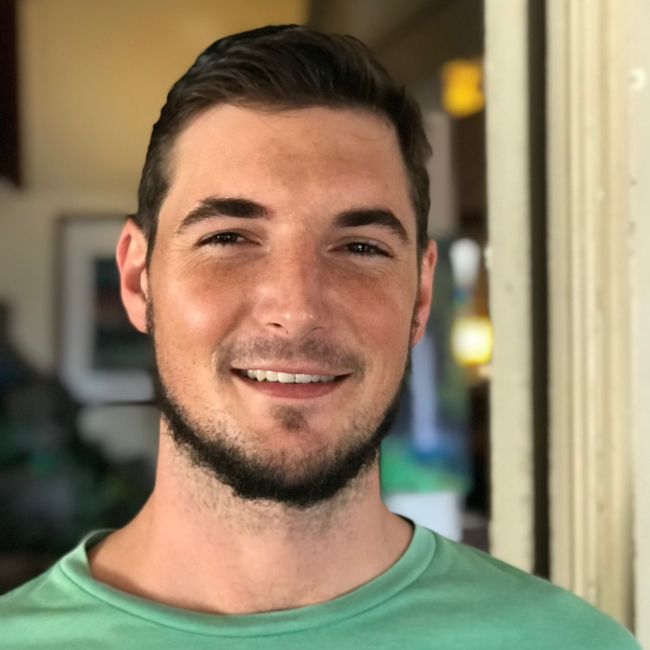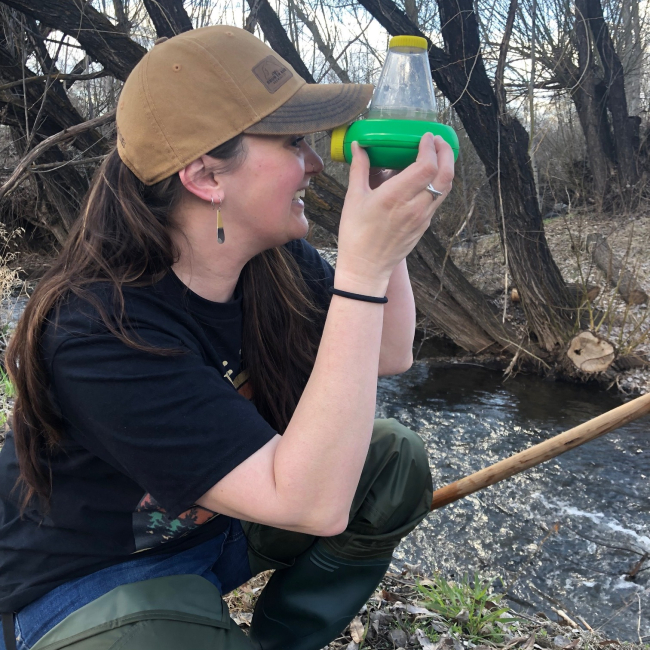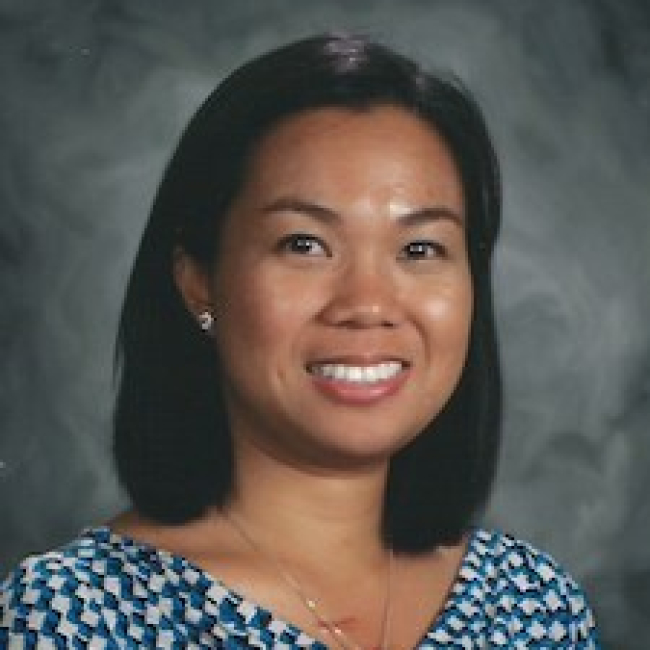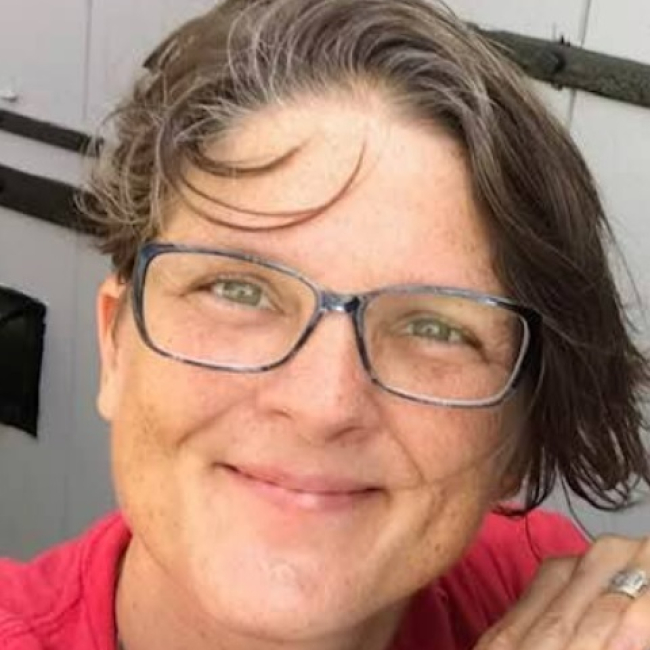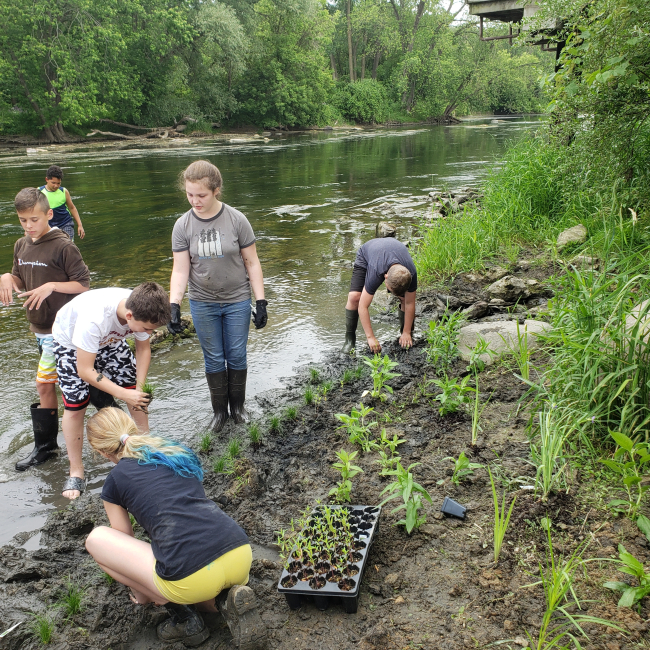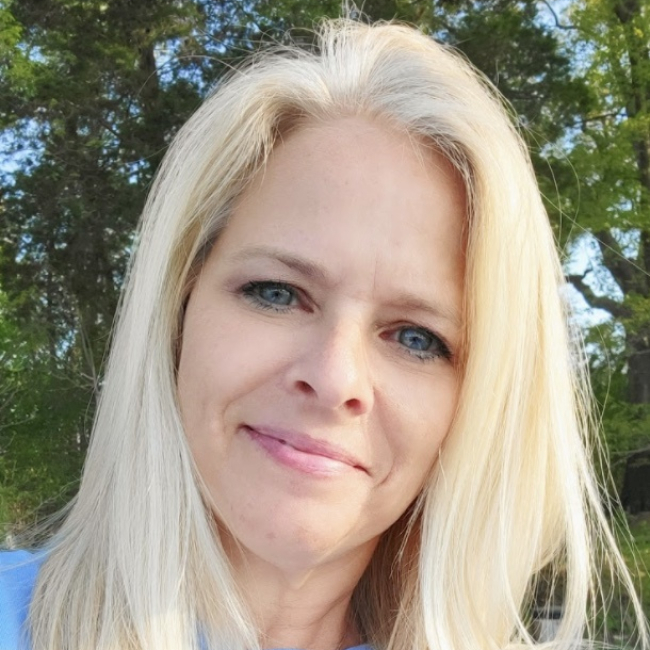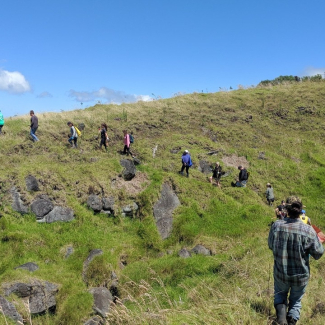
The Kohala Center
In Hawaiʻi, our traditional watershed practices within an ahupuaʻa must be considered along with modern science practices in order to provide high quality environmental education that is meaningful for both ʻāina and kanaka.
What is your name and current job?
Cheryl Ka‘uhane Lupenui, President & CEO, The Kohala Center, Waimea, Hawai‘i Island.
Kāhele Nahale-a, Special Projects Liaison, The Kohala Center, Waimea, Hawai‘i Island.
How has the NOAA Bay Watershed Education and Training (B-WET) program helped you grow personally and/or professionally?
The growth I have seen because of our B-WET project is in our ability to better steward our watersheds and ahupua‘a as a community learning from ‘āina, ancestral knowledge and hands-on experimentation.
Has B-WET and learning about the Meaningful Watershed Educational Experience (MWEE) framework enabled or helped you improve your programs? If so, how?
B-WET has helped us integrate our conservation and education programs. Our teams have become researchers, practitioners, and educators. We have also gone deeper into learning who our watersheds and ahupua‘a are in places “close to home.”
With the MWEE framework in mind, we have been able to seek alignment with our ʻike kupuna (indigenous, traditional ecological knowledge) and with modern day knowledge and practices. This allows us to provide programs that are globally applicable (participants can take what they’ve learned with us and apply it to their meaningful places) while also being locally intimate in its emphasis on building and strengthening relationships with place and listening to what our ahupuaʻa are telling us — they all tell a bit of a different story.
What challenges has B-WET or the MWEE framework helped you to address?
We have been challenged at times in “measuring” impact. B-WET has created a space where we can expand our perspective to include Hawaiian ways of assessing and not just Western ways. Now we are also asking “what was meaningful to the watershed?” Thus we are on a Hawai‘i-based journey of assessment for learning that continues to reveal ways to care for ‘āina and all its keiki (plants, animals and people).
What advice do you have for someone else interested in conducting high quality environmental education?
Be in a process of getting to know your environment before teaching about it. The deeper your relationship is with the environment you are working with the higher the quality will be in sharing it with (i.e., educating) others. And in Hawaiʻi, our traditional watershed practices within an ahupuaʻa must be considered along with modern science practices in order to provide high quality environmental education that is meaningful for both ʻāina and kanaka.




